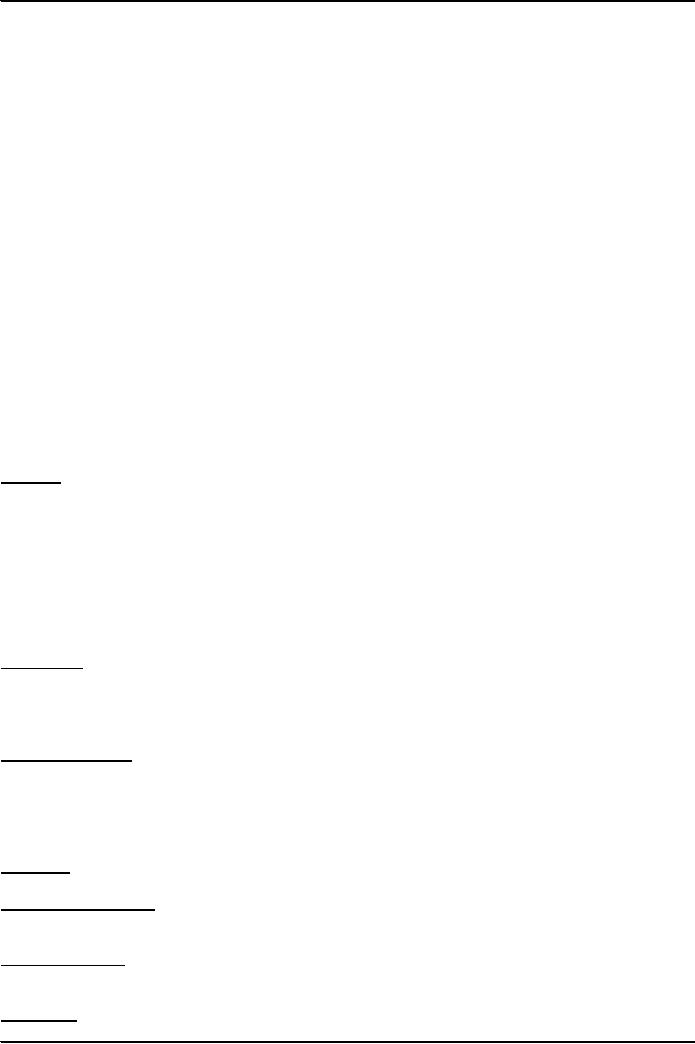 |
POPULATION STUDY AND ITS SIGNIFICANCE:Crude Birth Rate |
| << ISSUES IN EDUCATION:Low Enrollment, High Dropout, Gender Disparity |
| THEORY OF POPULATION GROWTH:Theory of Demographic Transition >> |

Introduction
to Sociology SOC101
VU
Lesson
35
POPULATION
STUDY AND ITS
SIGNIFICANCE
Demography is the
statistical description and analysis of
human population. It refers to
ascertaining the
numbers
and distribution of people,
changes in the numbers and
distribution of people over time, age
and
sex
composition, birth and death
rates among various quantities of
populations.
Study
of population seeks to discover the
causes and consequences of
population changes. The
changes in
population
take place primarily due to
changes in births, deaths and
migration, which are referred to as
the
three
components of population change. As an
interplay of these three
components one looks at the
number
of total persons which is
usually referred to as size;
the
characteristics of population,
called
composition;
and
where are these people
located, labeled as distribution
of
population. Prior to the
discussion
of the significance of the study of
population it seems pertinent to explain
some of the basic
concepts
likely to be used in this
discourse.
BASIC
CONCEPTS
Crude
Birth Rate: The
number of live births per
year per thousand of the
population.
Total
births in a specific
year
----------------------------------
X 1000
Total
population in that
year
The
CBR is "crude" because (1)
it does not take into
account, which people in the population
were actually
at
risk of having births, and (2) it ignores
the age structure of the
population.
Crude
birth rates are very general
statistics that are useful
for making overall comparisons
between different
groups,
societies and
regions.
Fertility:
The
number of live-born children the average
woman has. It may be called
child women ratio.
Total
No. of children aged 0-4 in
year X
-------------------------------------------------
Total
No. of women aged 15-49 in
year X
A
fertility rate is usually
calculated as the average number of
births per thousand women of
childbearing age
(15-49
years).
Total
births in year X
-----------------------------------
X 1000
Total
women aged 15-49
Fecundity:
The
potential number of children a normal
woman is biologically capable of
bearing. It is
physically
possible for a normal woman
to bear a child every year
during part of her life when
she is capable
of
conception. While there may be families
in which a woman bears
twenty or more children, fertility
rate
are
always much lower than
fecundity rates because
social and cultural factors
limit breeding.
Crude
Death Rate: The
number of deaths per thousand of the
population per year.
Total
death in a specific
year
-----------------------------------
X 1000
Total
population in that
year
Crude
death rates are also
called as mortality
rates.
Mortality:
The
number of deaths in a population.
Infant
Mortality Rate: The
number of babies per thousand
live births in any year
who die before
reaching
the
age of one year.
Life
Expectancy: The
number of years an average person
can expect to live. Life
expectancy has
increased
in
most societies in the world in the
past century.
Life
Span: The
maximum number of years that an
individual could live.
83

Introduction
to Sociology SOC101
VU
Migration:
The
Permanent
movement of
persons over a significant
distance.
International
migration: Migrant
crosses the boundary between one
country and another.
Emigrant:
When
persons leave their
country.
Immigrant:
When
persons arrive in another country.
Internal
migration: Migration
within a country.
Population
Census:
The
simultaneous recording of demographic
data by government, at a particular time, pertaining
to all
persons
who live in a particular territory. It
usually takes place after
every 10 years.
Vital
Statistics: Registration
of a person's birth, changes in
civil status throughout
his/her lifetime, and
his/her
death.
SIGNIFICANCE
OF POPULATIONS STUDY
There
are three main questions to
look into the significance of
population study:
1.
How
many people? It
refers to the size
of the
population in a territory. While
looking at the
size,
one also looks at the changes
that
are taking place in the
size. How are these
changes
being
effected by the trends in birth
rate, death rate, and in
migration?
2.
What
kind of people? It
refers to the composition
of the
population. The
composition
includes
the characteristics of the population
with respect to the age
structure, sex
differences,
literacy
rate and levels of literacy, religious
distribution, languages people speak,
occupational
structure,
housing structure, etc. In addition to
the absolute figures showing the
characteristics
one
also looks at the changes
that might be taking place
in the composition of the population
as
well as its future
implications.
3.
How
are people distributed in the
area? Distribution of
population refers to the
dispersion
of
people in a territory like the rural-urban
distribution, size of cities,
densities of population.
Analysis
of the distribution takes into
account the prospective changes as
well as its future
effects.
People
belonging to different walks of
life are interested in the existing as
well as the foreseeable trends
in
the
size, composition and
distribution of population.
For
example a planner is looking at the size
of the population because he has to
tie it with other social
and
economic
resources of the country. He has to
look into the correlations between the
size of population
and
the
economic development of the country. How
are the changes in population
size influencing the
economic
development and vice a versa?
The composition of the population may be
reflective of quality of
the
human resource, which can be
utilized for the development of the
economy. The changes in
the
composition
may also suggest the kind of
investments needed in the various
components of the population.
The
distribution of population is of specific
interest to the planner when he has to
look into the varying
needs
of people at different places.
From
the political perspective one
has to look into the size of
population while determining the
boundaries
of
constituent areas as well as the number of
members of the National Assembly, the
Senate, and
Provincial
Assemblies.
The information about the composition as
well as the distribution of population
helps in the
determining
the number of voters, the type of voters,
and the location of
voters.
A
businessman shall be interested in the
population because he uses the
manpower in the production of
goods
and services and ultimately
he shall be looking for the
consumers of his goods and
services. At
various
stage of his business operations he
shall be interested in all the
three components of population
i.e.,
size,
composition, and distribution. He
produces goods and services
keeping in view the characteristics
of
the
ultimate consumers.
The
study of population is of utmost
significance to an educationist because
he has to look into
the
educational
needs of the population and
arrange the facilities accordingly. What is the
size of population, of
which
how many are of school going
age, what is the their gender, what is
the occupational background of
their
parents, where are they
located - in rural/urban areas,
are some of the pertinent
questions about which
84

Introduction
to Sociology SOC101
VU
he
should have enough information prior to
chalking out an action program. The
study of population
helps
in
providing the relevant
information.
These
examples suggest that in
whatever field we work, the
demographic information is of utmost
value for
planning,
implementation, and success of any plan.
The causes and consequences
of changes in the size,
composition,
and distribution of population
have a bearing on the socio
economic development of the
country.
85
Table of Contents:
- THE ORIGINS OF SOCIOLOGY:Auguste Comte, The Fields of Sociology
- THE SOCIOLOGICAL PERSPECTIVE:Society affects what we do
- THEORETICAL PARADIGMS:Salient Paradigms, Critical Evaluation
- SOCIOLOGY AS SCIENCE:Empirical, Verifiable, Cumulative, Self-Correcting
- STEPS IN SOCIOLOGICAL INVESTIGATION:Exploration/Consultation
- SOCIAL INTERACTION:Social Status, ROLE, The Social Construction of Reality
- SOCIAL GROUPS:Primary and Secondary Groups, Reference Group, Networks
- ORGANIZATIONS:Utilitarian Organizations, Coercive Organizations
- CULTURE:Universality, Components of Culture, Symbols, Language
- CULTURE (continued):Beliefs, Norms, Cultural Diversity
- CULTURE (continued):Culture by social class, Multiculturalism, Cultural Lag
- SOCIALIZATION: HUMAN DEVELOPMENT, NATURE, Social Isolation
- UNDERSTANDING THE SOCIALIZATION PROCESS
- AGENTS OF SOCIALIZATION:The Family, The School, Peer Groups, The Mass Media
- SOCIALIZATION AND THE LIFE COURSE:CHILDHOOD, ADOLESCENCE
- SOCIAL CONTROL AND DEVIANCE:Crime, Deviants, Stigma, Labeling
- THE SOCIAL FOUNDATIONS OF DEVIANCE:Cultural relativity of deviance
- EXPLANATIONS OF CRIME:Sociological explanations
- EXPLANATIONS OF CRIME -- CONTINUED:White-Collar Crime, Conflict Theory
- SOCIAL DISTRIBUTION OF CRIME: EXPLANATIONS, Gender and Crime
- SOCIAL STRATIFICATION: INTRODUCTION AND SIGNIFICANCE
- THEORIES OF CLASS AND STRATIFICATION – I:Critical evaluation
- THEORIES OF SOCIAL CLASS AND STRATIFICATION – II
- THEORIES OF CLASS AND SOCIAL STRATIFICATION – III
- SOCIAL CLASS AS SUBCULTURE
- SOCIAL MOBILITY:Structural factors, Individual factors, Costs
- THE FAMILY: GLOBAL VARIETY, Marriage Patterns, Patterns of Descent
- FUNCTIONS OF FAMILY:Reproduction, Social placement
- FAMILY AND MARRIAGE IN TRANSITION:Family is losing functions
- GENDER: A SOCIAL CONSTRUCTION, Gender socialization
- GENDER SOCIALIZATION:Role of family, Gender Stratification
- EXPLANATIONS OF GENDER INEQUALITY:Conflict Explanations, Feminism
- FUNCTIONS OF SCHOOLING:Cultural Innovation, School Tracking
- ISSUES IN EDUCATION:Low Enrollment, High Dropout, Gender Disparity
- POPULATION STUDY AND ITS SIGNIFICANCE:Crude Birth Rate
- THEORY OF POPULATION GROWTH:Theory of Demographic Transition
- POPULATION PROFILE OF PAKISTAN:World Population Growth
- POPULATION PROFILE OF PAKISTAN (Continued):Age Distribution, Sex Composition
- IMPLICAIONS OF POPULATION GOWTH:Additional GDP needed per year
- POPULATION POLICY:Goals of Population Policy, Objectives, Strategies
- ENVIRONMENT AND SOCIETY:Global Dimension, Historical Dimension
- ENVIRONMENTAL ISSUES:Preserving Clean Water, Clearing the Air
- SOCIAL CHANGE:Social change is controversial.
- CAUSES OF SOCIAL CHANGE:Culture and Change, Conflict and Change, Modernization
- MODERNITY AND POST MODERNITY:Cultural Patterns, Post-modernity